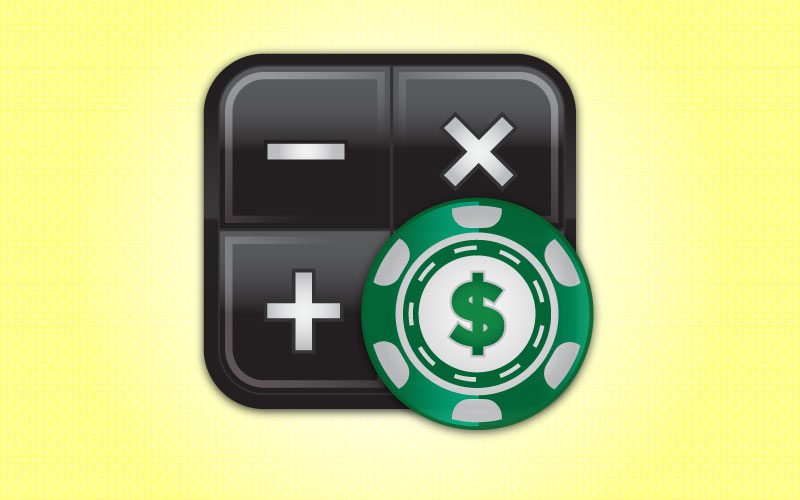There are many names of hands in poker. For example we often call pocket Ace’s pocket rockets, or Ace-King off suit big slick. There are also names for the type of hands we get. A pair is normally referred to as a “made hand,” and four cards to a flush or straight are often called draws. Yet, in their essence, the names of the previous are incorrect, as when it comes down to it, there is no such thing as a made hand, or a draw.
In their core, hands referred to as made and hands referred to as draws are something completely different than you may have thought. Made hands often have the connotation of being “better” than draws. For some weak players, draws are consider worthless, they are hands only “chasers” play. However, getting down to the bare bones, these hands deserve different names and connotations.
Draws:
1. A hand with variable equity with progressing streets.
A common flush draw is about 35% to hit on the flop. Yet, on the turn you either hit your flush, in which your equity is technically 100%, or you miss, which means your equity is instead 20% to hit. So flush draws become significantly stronger or weaker as the streets progress, and the same goes for any type of draws.
2. A hand with stable equity across ranges.
Let me quickly show you a few flop ranges against a flush draw.
Text results appended to pokerstove.txt
38,610 games 0.406 secs 95,098 games/sec
Board: Td 9d 5c
Dead:
equity win tie pots won pots tied
Hand 0: 37.641% 37.64% 00.00% 14533 0.00 { Ad4d }
Hand 1: 62.359% 62.36% 00.00% 24077 0.00 { 99+, 55, T9s, T9o }
Text results appended to pokerstove.txt
62,370 games 0.005 secs 12,474,000 games/sec
Board: Td 9d 5c
Dead:
equity win tie pots won pots tied
Hand 0: 45.142% 45.14% 00.00% 28155 0.00 { Ad4d }
Hand 1: 54.858% 54.86% 00.00% 34215 0.00 { JJ+, KdQd, Q9s, J9s, T8s, 7d6d, 75s, 6d5d, 5d4d, Q9o, J9o, 75o }
The First range is super strong, it only consists of over overpairs and sets. Yet, the second range is very, very weak. But look at the change in equity our flush draw has against those ranges. It’s only 8%! As your opponents strength of range changes, our equity barely changes at all.
Made Hands:
1. A hand with stable equity with progressing streets.
Made hands are essentially the exact opposite of draws. Let’s say we have KTo on a T95 rainbow flop. With any turn but a T or K, our hand doesn’t get significantly stronger or weaker. Therefore, our equity stays about the same.
2. A hand with variable equity across ranges.
Now here are some ranges varying in strength in a similar scenario with a made hand.
Text results appended to pokerstove.txt
558,360 games 0.031 secs 18,011,612 games/sec
Board: Td 9d 5c
Dead:
equity win tie pots won pots tied
Hand 0: 56.214% 56.12% 00.10% 313324 550.50 { KTo }
Hand 1: 43.786% 43.69% 00.10% 243935 550.50 { JJ+, KdQd, Q9s, J9s, T8s, 7d6d, 75s, 6d5d, 5d4d, Q9o, J9o, 75o }
Text results appended to pokerstove.txt
374,220 games 0.015 secs 24,948,000 games/sec
Board: Td 9d 5c
Dead:
equity win tie pots won pots tied
Hand 0: 15.771% 15.56% 00.21% 58245 772.50 { KTo }
Hand 1: 84.229% 84.02% 00.21% 314430 772.50 { 99+, 55, ATs, T9s, ATo, T9o }
As the ranges significantly changed in strength, our equity decreased an enormous 40.5%! As you can see, made hands play much better versus ranges that are worse than them, but draws play well regardless of the range they are against.
Now that we have made the distinction between what a made hand really is, and what a draw really is, we can rename both.
Draw = Hand with variable equity with progression of streets and stable equity across ranges
Made Hand = Hand with stable equity with progression of streets and variable equity across ranges
But why does it all matter? That’s for you to figure out. Hopefully this article stirred your mind so I don’t have to tell you. 🙂
Submit your review | |










